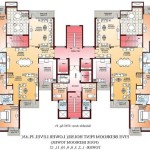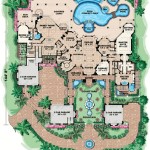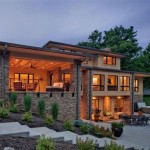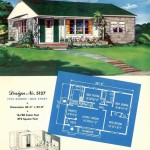Handicap Accessible House Floor Plans
Creating a home that is both comfortable and accessible for individuals with disabilities is crucial for promoting independence and well-being. Handicap accessible house floor plans are meticulously designed to accommodate the specific needs of individuals with physical challenges, ensuring ease of movement and functionality throughout the living space.
When designing handicap accessible floor plans, several key considerations must be taken into account:
Doorways and Hallways
Doorways should be wide enough to allow for the passage of wheelchairs (typically a minimum of 36 inches in width). Hallways should be spacious, providing ample room for maneuvering and turning. Additionally, consider installing automatic door openers for added convenience.
Ramps and Elevators
Ramps provide a gradual incline for wheelchairs to access different levels. Ideally, ramps should have a slope of no more than 1:12 and should be equipped with handrails for support. In cases where ramps are not feasible, elevators may be necessary to accommodate vertical movement.
Bathrooms
Bathrooms should be designed with roll-in showers, which feature a curbless entry and grab bars for support. Toilets should be elevated, and sinks should be placed at a height that is accessible while seated. Provide sufficient space for wheelchair maneuvering and consider installing accessible storage solutions.
Kitchens
Kitchens can be made handicap accessible by lowering countertops, installing adjustable cabinetry, and providing open floor space for wheelchair access. Cooktops should be equipped with side-mounted controls for ease of use, and appliances should be placed at accessible heights.
Living Rooms
Living rooms should be furnished with comfortable, supportive seating that is easy to get in and out of. Provide ample lighting to illuminate potential obstacles and consider installing assistive technology such as voice-controlled devices or smart home systems for added convenience.
Other Considerations
In addition to the specific design features mentioned above, other important considerations for handicap accessible floor plans include:
- Non-slip flooring to prevent falls
- Accessible electrical outlets and switches
- Wide turning radiuses in hallways and doorways
- Universal design principles to create a space that is usable by all
Creating handicap accessible house floor plans is a complex but rewarding endeavor that requires a thorough understanding of the needs of individuals with disabilities. By incorporating these design considerations, you can create a home that empowers and provides a sense of dignity for those who live there.

Plan 8423jh Handicapped Accessible Split Bedroom Southern House Plans Floor

Accessible Handicap House Plans Style Results Page 1

Wheelchair Accessible House Plan 2 Bedrms Baths 1687 Sq Ft 147 1009

Wheelchair Accessible Floor Plan House Plans Bathroom

Wheelchair Accessible Small House Plans Drummond

Exclusive Wheelchair Accessible Cottage House Plan 871006nst Architectural Designs Plans

Wheelchair Accessible Small House Plans Drummond

Plan 1658 Handicapped Accessible House

How To Make Your Home Wheelchair Accessible

Attractive Traditional House Plan With Handicapped Accessible Features 86279hh Architectural Designs Plans








